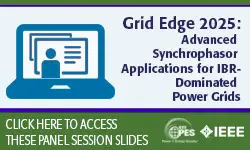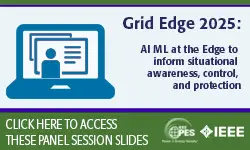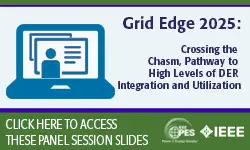TESC 2019 - System Design & Architecture
P. De Martini, D. Hammerstrom, D. Holmberg, K. Nodehi
-
Members: FreePES
IEEE Members: $11.00
Non-members: $15.00Length: 00:55:16
This .mp3 contains audio of the following:
Transactive Oriented Grid Architecture - To enable the development of these transactive energy hubs, it is necessary to consider structural changes in the architectural of urban distribution systems and the "customer to distribution" operational coordination necessary to align with TOD. Insights from transportation network architecture in a TOD context will be discussed.
A Transactive Network Template for Decentralized TE Systems - The complexity of launching a new transactive energy network is overwhelming. Successful recent examples might include Independent System Operators. These have probably been successful because:
1) the rules of these markets were codified and accepted by market participants| and
2) the market networks are notably shallow in that they have but one centralized price discovery mechanism.
How might still deeper, more distributed networks of transactive agents might be facilitated? Price discovery mechanisms and computations in these networks should become fully decentralized. The many transactive agents that make up the distributed transactive energy networks might reside not only with load serving entities and wholesale providers who participate today| but also at many additional levels of the electricity distribution circuit - in appliances, devices, residences, businesses, industries, substations, transformers, generators, and distributed energy resources of any type.
A Simple Market Plus controls Approach for Distribution Grid Voltage - A comprehensive approach to voltage management is proposed that uses both distribution grid equipment and customer DER to manage voltages on the grid.
Advanced Io-T Based Metering Infrastructure to Support Transactive Energy Exchanges - In this presentation we articulate the existing gaps in AMI and telemetry to meet the visibility needs of system operators into a large number of active DER assets, as well as the metering and deliverability verification needs of a large number of prosumers engaged in transactive exchanges. This includes the need for recording transactions at the point of interconnection (the metered point) between the Behind-the- Meter (BTM) participating assets and the grid.


